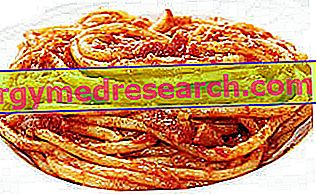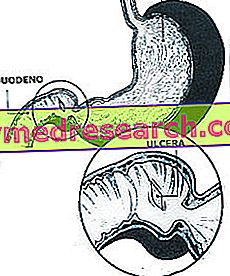Generality
Amatriciana means a sauce of condiment for dry pasta.

Birth and Clarifications
Amatriciana is a typical Italian preparation. It is a modification of the much more ancient "gricia", an accompanying sauce typical of the pastoral diet in the Apennine areas between Abruzzo and Lazio. Compared to the more recent version, the griccia is without tomato and, for many, it represents the only true amatriciana sauce. It is also fundamental to remember that, in spite of popular belief, amatriciana is NOT a true dish of Roman cuisine, but rather of Rieti; more precisely, the sauce originates from Amatrice, although it cannot be excluded that Grisciano (a neighboring municipality) gave birth to the very first form of gricia. Until the first half of the 20th century AD, in areas of origin, amatriciana was still consumed mainly without tomatoes (although it had already been rooted in Italian cuisine for about a century).
 | |||||||||||||||||||||||||||||||||||||||||||||||||||||||||||||||||||||||||||||||||||||||||||||||||||||||||||||||||||||||||||||||||||||||
Nutritional values (per 100 g of edible portion)
| |||||||||||||||||||||||||||||||||||||||||||||||||||||||||||||||||||||||||||||||||||||||||||||||||||||||||||||||||||||||||||||||||||||||
Furthermore, the format of "original" pasta to accompany amatriciana sauce is not bucatino (a favorite of the Romans), but spaghetti. Other modifications of the recipe concern the use of onion and olive oil, originally absent and probably not even replaced by other products.
Amatriciana recipe
As anticipated, throughout history, the recipe for amatriciana has been revisited and modified several times. What will follow is considered the most current, and unambiguously accepted, version of the amatriciana sauce.
Ingredients
Pork cheeks, S. Marzano tomatoes, dry white wine, matured or Roman matured pecorino, extra virgin olive oil, whole red pepper, salt.
Method
In a saucepan with water, boil the tomatoes, peel them, separate the seeds and cut the pulp into cubes. In a pan, heat the oil and sauté the guanciale, skinned and cut into cubes, with a piece of red pepper; then blend with white wine.
Remove the bacon and sauté the tomato cubes in the liquid to thicken. Remove the chilli and correct the flavor. Sauté the pasta in the tomato and then add the bacon. With the heat off, sprinkle the grated pecorino.
Pasta with Amatriciana
X Problems with video playback? Reload from YouTube Go to Video Page Go to Video Recipes Section Watch the video on youtubeNutritional Features
Amatriciana is a remarkably energetic sauce, which is unsuitable for a low-calorie diet against overweight.
It is a base rich in lipids and, despite the predominance of single-sided fatty acids, a good part is saturated. This characteristic makes amatriciana a food NOT suitable for feeding the subject suffering from hypercholesterolemia.
Proteins are scarce, as are carbohydrates and dietary fiber.
Amatriciana contains a high sodium intake, a predisposing or aggravating element of high blood pressure.
With regard to vitamins and other mineral salts, there are no noteworthy concentrations. The high lipid supply and the important sodium concentrations prolong the time of gastric permanence, making the amatriciana a sauce not recommended in the presence of gastritis, gastroesophageal reflux and digestive problems in general.



